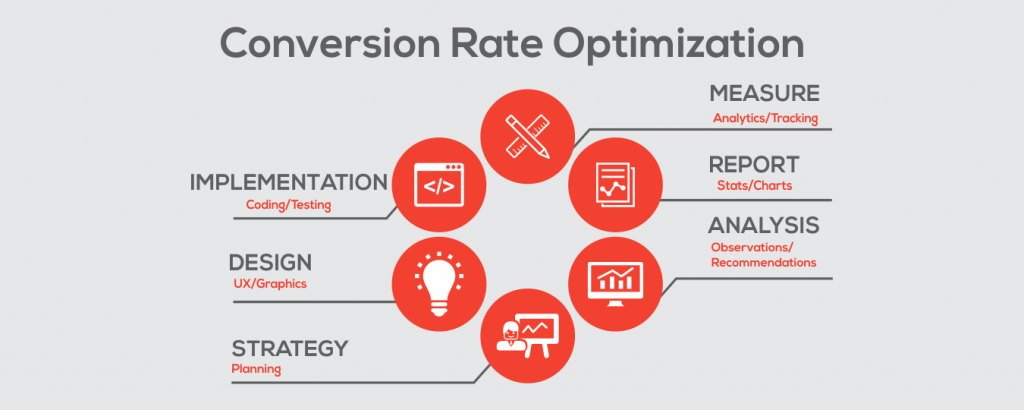The goal of sales activities is to sell and earn. Attention is often placed on the first term – to sell, imagining that earnings are a natural derivative of the sale. An important indicator of a website’s health is its ability to convert qualified visitors into customers, and conversion rate optimization uses analytic and user feedback to improve online store performance.
 A simple example
A simple example
100 people enter a physical store
- 30 people buy without any help, they decided to buy
- 30 people have no intention of buying, they will never buy. It was hot outside and there is air conditioning in the store, but they have no intention of buying or searching.
- It makes a difference when you manage to sell to any one, in increasing numbers, of the other 40 potential customers.
100 people enter an online store
- When it’s OK, 1 in 100 people buy.
- We know little or nothing about the 99 visitors.
- It is true that there are eCommerce with conversion rates of 3%, 4%, 7%
- But it is also true that there are eCommerce with conversion rates of 0.1% A sale every 1000 accesses.
Conversion rate optimization means focusing on improving the effectiveness of your online sales tool to increase sales with the same amount of traffic that you currently receive. And it is clear that bringing the conversion rate from 0.1% to 0.2% means a 100% increase.
The assessment base must always be in the profits that are obtained. If more profits are made than the costs incurred, each activity is confirmed. The activities that cost more than the profit they produce can be evaluated and optimized, but abandoned if they continue to produce no profits.
Continue Reading: How to design your landing page for better conversions
 Factors to consider
Factors to consider
1) Learning to read data: Learn about your audience, having updated data on your audience is vital. If we are dealing with repetitive products, we know who our customers are, because we have their shipping addresses. Adding other demographic data and associating it with the products purchased is essential to identify profiles, behaviors, ways of using the site, and how to add value to sales proposals. The surveys, well made and constructed, are a fundamental element of this activity.
2) Use A / B test: As a common method for optimizing the conversion rate. Showing two versions of the same page to similar visitors to figure out which one performs best is something not difficult and should enter the toolbox of each seller. Imagine that every good seller in the physical point, constantly measures the income of each individual exhibition layout and the goods are changed if they do not get some sales performance.
3) Innovate on the site: Recommendations, customizations, internal search engine, recovery of abandoned carts, presentation of products, images, texts, and unpopulated pages. There is no area of the site that cannot be analyzed, considered, evaluated and improved.
4) Improve the architecture of your information: No online sales project stands up if it is not supported by good information architecture. A few years ago it was enough to have images, describe and insert the products, assign quantities. The sales volume was such that manual management could work.
Today, if you sell on more channels, if you need to be present on the online shop, on the comparators, on the marketplace, if you manage different pricing policies depending on the channel or the markets, if you need to organize deliveries and tracking deliveries to ensure a good purchase experience, you cannot think of managing your catalog.
Set up an Order Management System works in an organized way and you will see significant improvements in the performance of your online business, of which the Conversion Rate is an important indicator.



